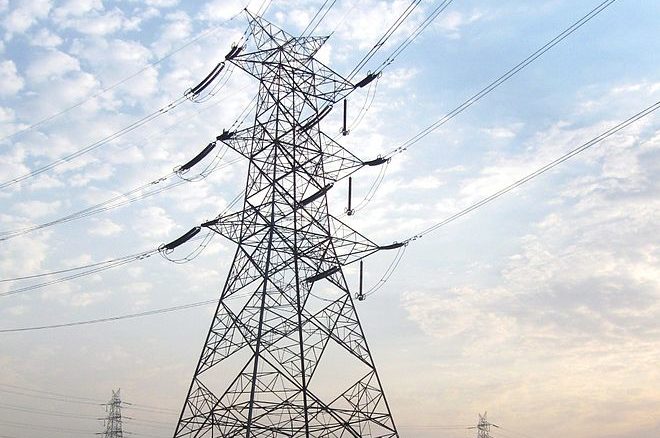Ratings agency ICRA has revised India’s energy demand growth forecast for FY2022 upwards by 2-2.5%. It expects the energy demand during the fiscal year to grow by 8-8.5%, compared to its previous estimate of 6.0% made in January.
The increased energy demand, in turn, is likely to further improve the thermal plant load factor (PLF) level to 58.5%-59.0% in FY2022. However, ICRA has maintained a negative outlook for the thermal power sector as PLF levels remain below 60%.
Drivers
ICRA reported the all-India electricity demand during the first half of FY 2022 (April-September period of 2021) increased by 12.7% to 707 billion units (BU) on a year-on-year (Y-o-Y) basis supported by a lower base, improvement in economic activity, and lower-than-normal monsoons leading to higher demand from the agriculture segment during July and August 2021.
The energy demand in H1 FY2022 also remained higher by 2.9% y-o-y, led by a relatively sharper recovery in the energy demand as reflected from 8.4% growth in Q2 FY2022 against Q2 FY2020.
Commenting further, Girishkumar Kadam, Senior Vice President & Co-Group Head – Corporate ratings, ICRA, said, “Based on the energy demand growth trends seen during last six-month period, the electricity demand growth outlook for FY2022 is revised upwards to 8.0 – 8.5%, supported by low base effect in FY2021 and faster-than-expected recovery in demand post-COVID second wave seen in April and May 2021. Nonetheless, any emergence of a potential third COVID wave and consequent lockdown restrictions remains monitorable. In turn, the all-India thermal PLF level is estimated to show a modest improvement to about 58.5-59.0% in FY2022, against the earlier estimate of 57.0-58.0%.”
Thermal outlook
Notwithstanding the recovery in electricity demand, the all-India average thermal PLF level is likely to remain subdued, at below 60.0% in the current fiscal. Thus, ICRA had assigned a negative outlook to the thermal power generation segment. It cited the lack of visibility in the signing of new power purchase agreements (PPAs) for private-sector thermal power producers and upward pressure on the cost of power generation with the strengthening in fuel price levels and tighter environmental compliance requirements as the other reasons for the negative thermal sector outlook.
The spot power tariffs on day-ahead market of the Indian Energy Exchange witnessed a sharp recovery to INR 3.7/kWh in 6M FY2022 from about INR 2.8/kWh in FY2021 led by a better-than-expected recovery in electricity demand and coal supply constraints witnessed in August and September 2021.
With expected normalization in domestic coal availability, ICRA expects the average spot tariffs to remain at about INR 3.5/kWh in the near term–still relatively higher than the historical average level of INR 3.2/kWh over the last 10-year period. Further, spot tariffs remain inherently volatile as seen in the past, depending on the fuel availability, renewable energy generation, and demand level.
Vikram V, Vice President & Sector Head – Corporate Ratings, ICRA, adds, “Delays in tariff determination process by state regulators continues to remain an area of concern given that tariff orders have been issued for utilities in only 19 out of the 28 states for FY2022 so far and the tariff hikes remain modest. Tariff orders have not been issued in the key states such as Rajasthan, Telangana, Tamil Nadu, and West Bengal.
“Given that coal as fuel contributes about 70% of all India energy generation, distribution utilities remain exposed to upward pressure on the cost of power purchase. In case of upward revision in domestic coal price by 10% and strengthening in imported coal price seen by about 70% since April 2021, the cost of power supply is estimated to increase by about 1.0-1.5% for distribution utilities at all India levels, depending upon the mix of supply from imported coal-based plants. As a result, timely pass-through of fuel and power purchase cost variation through the regulatory framework remains extremely critical for the state utilities.”
ICRA’s outlook for the distribution segment remains Negative given the continued weakness in the financial position of most state distribution utilities amid the operating inefficiencies and inadequate tariffs.
This content is protected by copyright and may not be reused. If you want to cooperate with us and would like to reuse some of our content, please contact: editors@pv-magazine.com.









3 comments
By submitting this form you agree to pv magazine using your data for the purposes of publishing your comment.
Your personal data will only be disclosed or otherwise transmitted to third parties for the purposes of spam filtering or if this is necessary for technical maintenance of the website. Any other transfer to third parties will not take place unless this is justified on the basis of applicable data protection regulations or if pv magazine is legally obliged to do so.
You may revoke this consent at any time with effect for the future, in which case your personal data will be deleted immediately. Otherwise, your data will be deleted if pv magazine has processed your request or the purpose of data storage is fulfilled.
Further information on data privacy can be found in our Data Protection Policy.